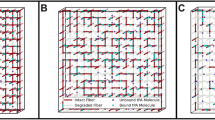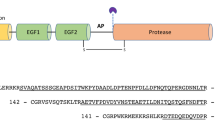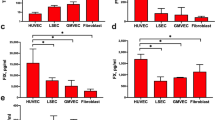Abstract
THREE fibrinolytic agents have been encountered in fibrin clots. The first was described as lytic factor in an earlier communication1. It was extracted with borate from trypsin-digested clots. It has since been found that extraction can be carried out successfully with 0.9 per cent sodium chloride and other salt solutions. Active preparations contained a 17-ketogenic steroid and were inactivated by β-glucuronidase and by heating at 56° C for 30 min. The inhibitory effect of potent lytic factor on the clotting of fibrinogen by thrombin or aqueous clot extract1 was very marked. An amount of 0.0004 ml. prevented fibrin formation, while with 0.0002 ml. only a partial clot was produced. With recalcified oxalated plasma different reactions were observed. One-hundredth ml. of the same preparation induced formation of a complete clot in 30–35 sec; with 0.05–0.08 ml. partial clots formed in the same time interval, while 0-15 ml. prevented clotting entirely. The lytic activity of the factor was strongly inhibited by serum, even after the serum had been treated with 0.2 N sodium hydroxide to destroy glucuronides and then neutralized with hydrochloric acid.
This is a preview of subscription content, access via your institution
Access options
Subscribe to this journal
Receive 51 print issues and online access
$199.00 per year
only $3.90 per issue
Buy this article
- Purchase on Springer Link
- Instant access to full article PDF
Prices may be subject to local taxes which are calculated during checkout
Similar content being viewed by others
References
Kopper, P. H., Nature, 195, 608 (1962).
Kopper, P. H., Nature, 193, 785 (1962).
Kopper, P. H., Nature, 201, 1335 (1964).
Kopper, P. H., Nature, 196, 280 (1962).
Kopéc, M., Darocha, T., Niewiarowski, S., and Stachurska, J., J. Clin. Pathol., 14, 478 (1961).
Meldolesi, G., Siedel, W., and Möller, H., Z. physiol. Chem., 259, 137 (1939).
Stich, W., Münch. med. Wschr., 92, 1275 (1950).
Pruckner, F., and v. Dobeneck, H., Z. physik. Chem., 190 A, 43 (1942).
Gray, C. H., The Bile Pigments (Methuen and Co., Ltd., London, 1953).
Hench, P. S., Proc. Staff Meet. Mayo Clinic, 13, 161 (1938).
Gilbertsen, A. S., Lowry, P. T., Hawkinson, V., and Watson, C. J., J. Clin. Invest., 38, 1166 (1959).
Gilbertsen, A. S., Hawkinson, V., and Watson, C. J., J. Clin. Invest., 38, 1175 (1959).
Author information
Authors and Affiliations
Rights and permissions
About this article
Cite this article
KOPPER, P. Fibrinolysins from Fibrin Clots. Nature 203, 534–535 (1964). https://doi.org/10.1038/203534a0
Issue Date:
DOI: https://doi.org/10.1038/203534a0
This article is cited by
Comments
By submitting a comment you agree to abide by our Terms and Community Guidelines. If you find something abusive or that does not comply with our terms or guidelines please flag it as inappropriate.



